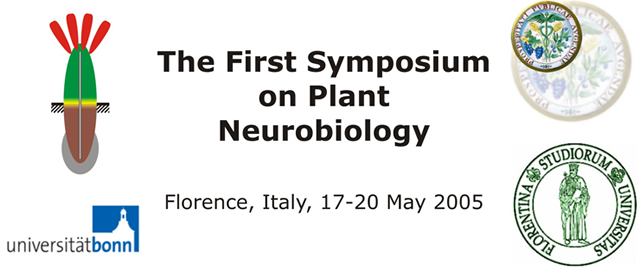|
Signal perception and transduction in plant innate immunity |
| |
|
Thorsten
Nürnberger*, Frederic Brunner, Stefan Engelhardt, Yvonne Gäbler, Birgit
Kemmerling |
|
Center for Plant Molecular Biology, Research Group Plant Biochemistry, University of
Tübingen , Auf der Morgenstelle 5, D-72076 Tübingen ,
Germany |
| *email:
nuernberger@uni-tuebingen.de
|
| |
|
Immunity of an entire plant species to microbial infection (non-host
resistance) is determined by intertwined layers of defense including both constitutive barriers and inducible
reactions. Activation of non plant cultivar-specific inducible responses is likely based upon recognition of
pathogen-associated molecular patterns, which bind to plant receptors. We have identified a cell wall
transglutaminase (TGase) from phytopathogenic Phytophthora spp. that triggers defense responses in
parsley and potato. A surface-exposed fragment within this TGase (Pep-13) was shown to be indispensable for
both elicitor and TGase activity of the protein, suggesting a crucial role of this domain for protein
stability and/or enzymatic activity. Ligand-induced receptor activation gives rise to elevated levels of
cytoplasmic calcium, subsequent posttranslational activation of MAPK, production of reactive oxygen species
and antimicrobial phytoalexins. NPP1, another Phytophthora-associated surface structure was shown to
trigger a similar cascade of events through a receptor system distinct of the Pep-13 receptor. Currently,
conditional expression of NPP1-induced cell death in Arabidopsis thaliana is employed to isolate
mutants impaired in NPP1 perception. In addition, two molecular patterns associated with phytopathogenic
pseudomonads, lipopolysaccharide and the typeIII effector, HrpZ, were shown to synergistically activate plant
defense in parsley. Moreover, LPS alone as well as type III secretion-deficient pseudomonads were shown to
trigger systemic acquired resistance (SAR) in Arabidopsis, suggesting that the plant defense-inducing capacity
of microbial surface structures contributes to physiologically relevant resistance responses, such as SAR.
Microarray experiments using the Affymetrix ATH1 chip and RNA prepared from pathogen-infected as well as
elicitor-infiltrated A. thaliana plants were performed to identify genes whose expression pattern and
predicted molecular function implied a role in signal perception and transduction. Plants carrying homozygous
T-DNA insertions in a gene encoding a leucine-rich repeat receptor kinase were identified that showed an
altered disease resistance. A molecular characterization of the protein will be presented. |

